- 4 Technology
- Technology Development
SkyJuster® for Suspended Platforms: Uses Gyroscopic Effect to Reduce Swaying of Suspended Platforms
Obayashi Develops SkyJuster® using Gyroscopic Effect to Reduce Swaying of Suspended Platforms
The Product Drastically Improves Work Safety during Exterior-Wall Repairs and Cleaning
Obayashi Corporation has developed SkyJuster® (“SJ-G”) for suspended platforms. It uses the gyroscopic effect to reduce the swaying of suspended platforms, which are utilized to perform work on exterior walls of buildings and structures.
Suspended platforms are used for work on exterior walls of buildings. Because the platforms (which workers ride) are suspended by wires from the rooftop, wind and slight movements of the workers can cause the platform to sway or turn. When a platform moves, it not only reduces work efficiency; it can also cause damage to the glass of buildings on impact and raise safety concerns.
Guide rollers and supporting ropes were traditionally used to keep platforms from swaying or turning. However, they require guiderails to be installed on the exterior walls of the building and pose a risk of damaging the building on contact. Installing a fan on the platform is another way to prevent swaying. However, the fan is noisy and difficult to operate.
SJ-G is a new system we have developed by adapting the SkyJuster®(*1) to suspended platforms. SkyJuster® is a device which controls the direction of cargo lifted by cranes. Simply installing SkyJuster® inside or underneath a suspended platform prevents the platform from turning or swaying, providing stability and improving work efficiency.
Obayashi plans to expand the use of SkyJuster® by including it in many design proposals and construction projects.
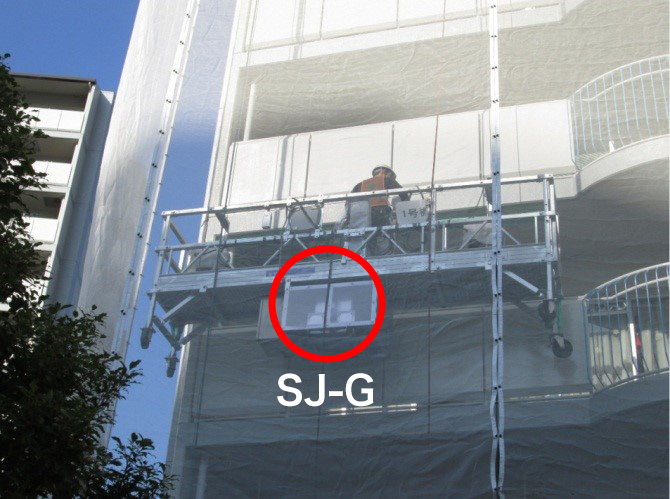
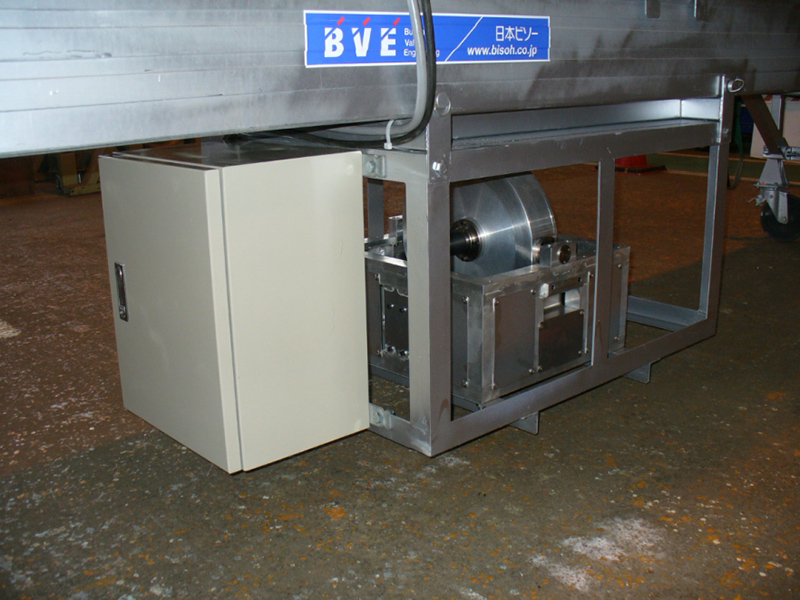
The main features of SJ-G are as follows:
-
Reduces the swaying of platforms caused by wind and/or movements of workers.
SJ-G uses the gyroscopic effect (*2) to control the direction of suspended platforms. It prevents platforms from turning and reduces swaying from wind and movements of workers. This increases work efficiency by approximately 30%. It has been confirmed in an experiment that the system can keep a platform from turning in wind with an instantaneous speed of 13 m/s. For safety reasons, the law prohibits working on suspended platforms in strong winds, when the 10-minute average wind speed is 10 m/s or more. Therefore, the system should be sufficient for normal work performed within the limits of the law.
-
Does not damage buildings.
SJ-G is normally installed inside or underneath a platform. Unlike standard devices designed to stop platforms from turning or swaying, it does not require any work to be done on exterior walls. There is no need to remove hardware or to repair or clean exterior walls. It will leave the building undamaged.
-
Designed for permanent or temporary platforms. No guiderails need to be placed on exterior walls.
Since SJ-G is installed inside or underneath suspended platforms, it can be used with permanent or temporary platforms. It can also be installed on a platform that is already in use, and it works with many types of suspended platforms.
Because it does not require guiderails on exterior walls, SJ-G can provide significant cost savings and improve appearance when used in permanent suspended platforms for new building constructions.
*1 Overview of SkyJuster®
■ Functions
-
Stops lifted cargo from turning.
It stops lifted cargo from turning due to wind and the inertial force caused by a moving crane.
-
Keeps the position of lifted cargo.
It counters disturbances (wind or inertial force) to keep lifted cargo in the correct position.
-
Turns lifted cargo on command.
It turns lifted cargo in the air for correct placement by the crane.
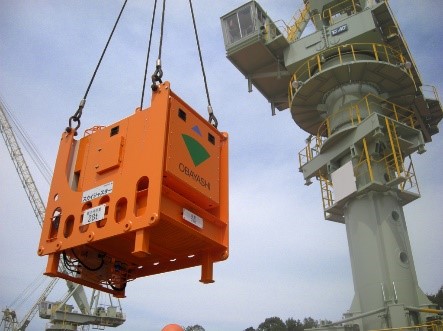
■ Capabilities
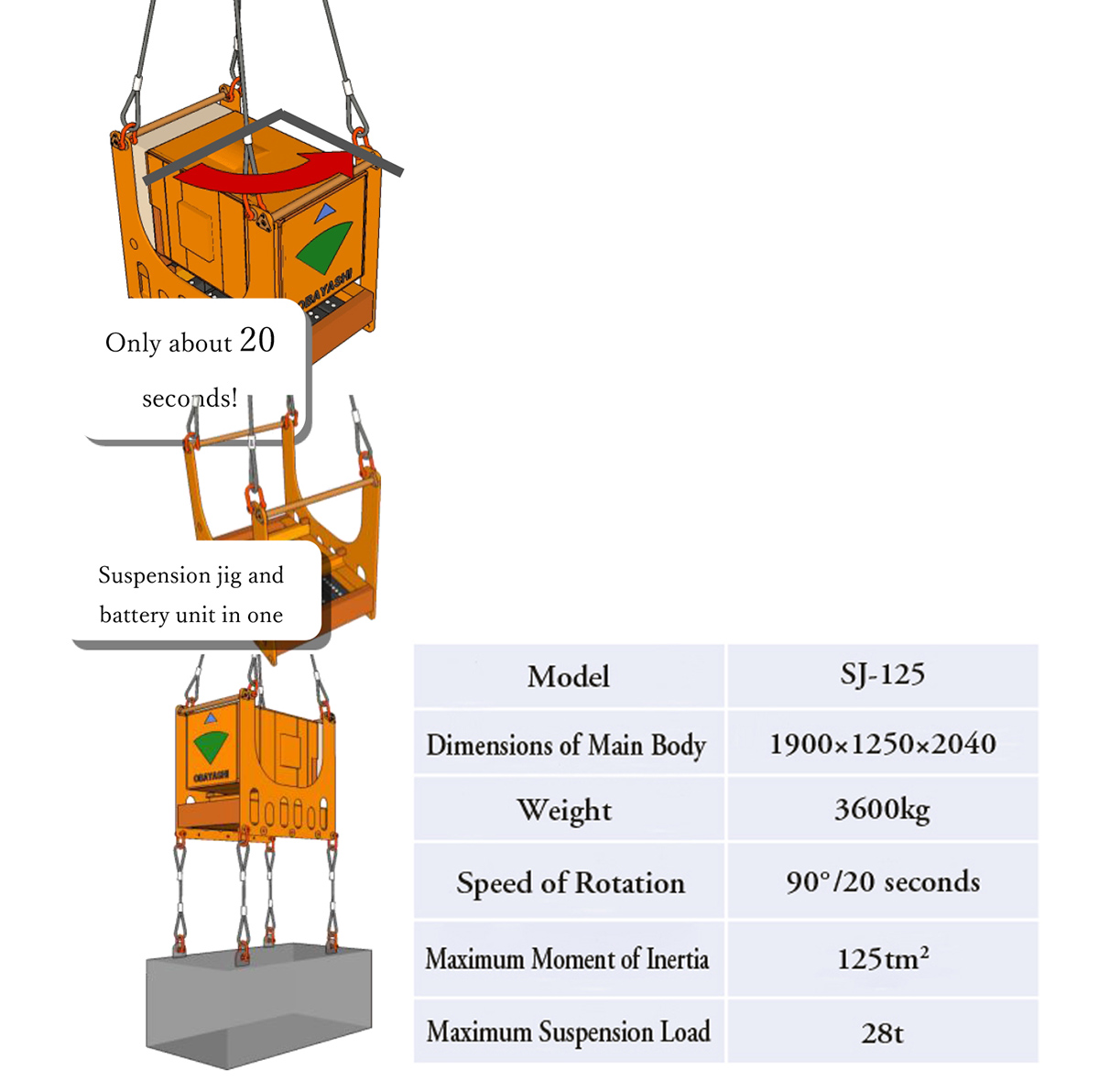
■ Structure and Principle (*2 Gyroscopic Effect)
SkyJuster® uses the principle of gyroscopic effect. The faster an object spins, the more stable it becomes.
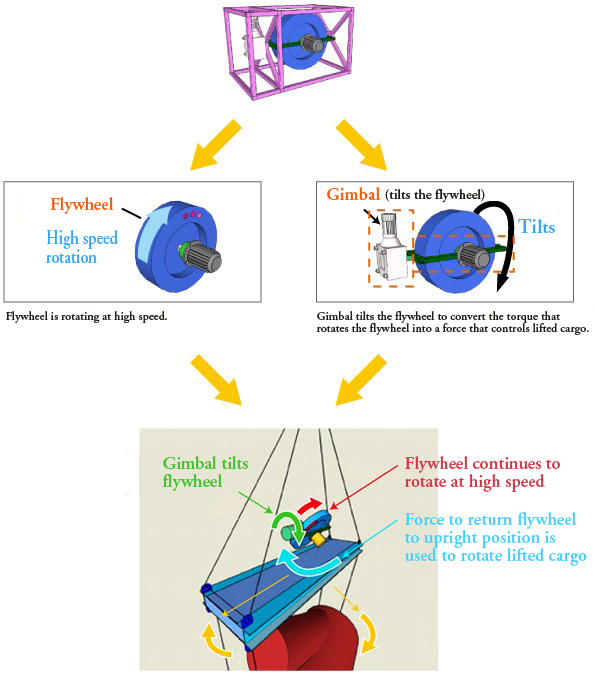
■ Product Line
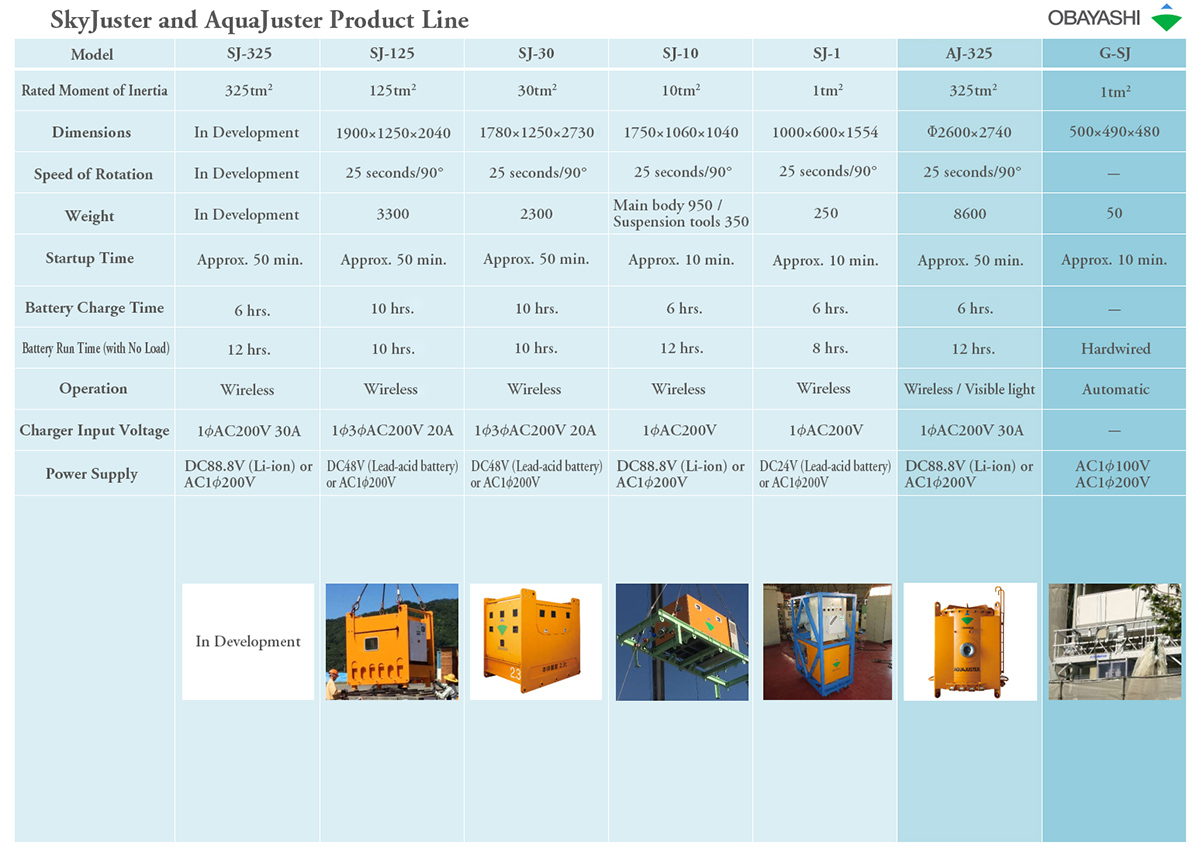
- Management and
Organization- The Articles of Incorporation
- Basic Principles
- Transitioning of Corporate Symbol
- Corporate Officers
- Organization Chart
- Stock Information
- Financial Statements
- Technology
- BIM Timeline
- Awards
- Major Publication
- Group Companies
- Group Companies (in Japan)
- Group Companies (Overseas)